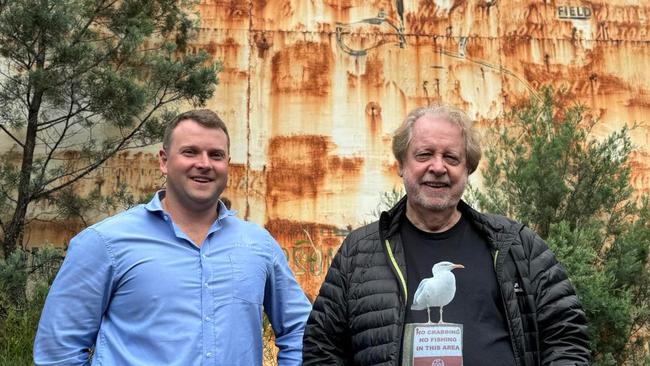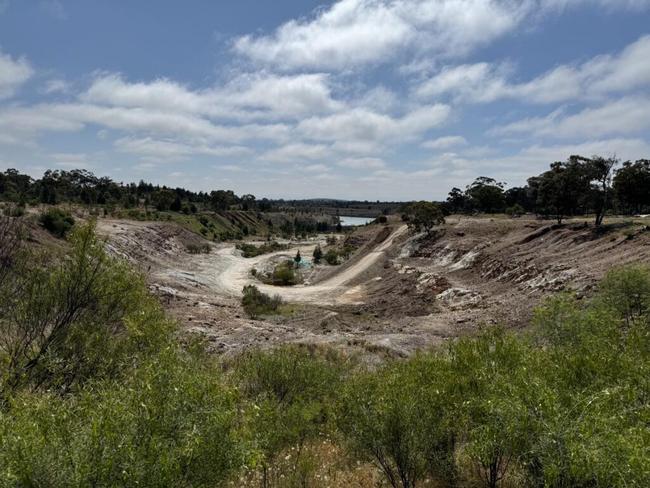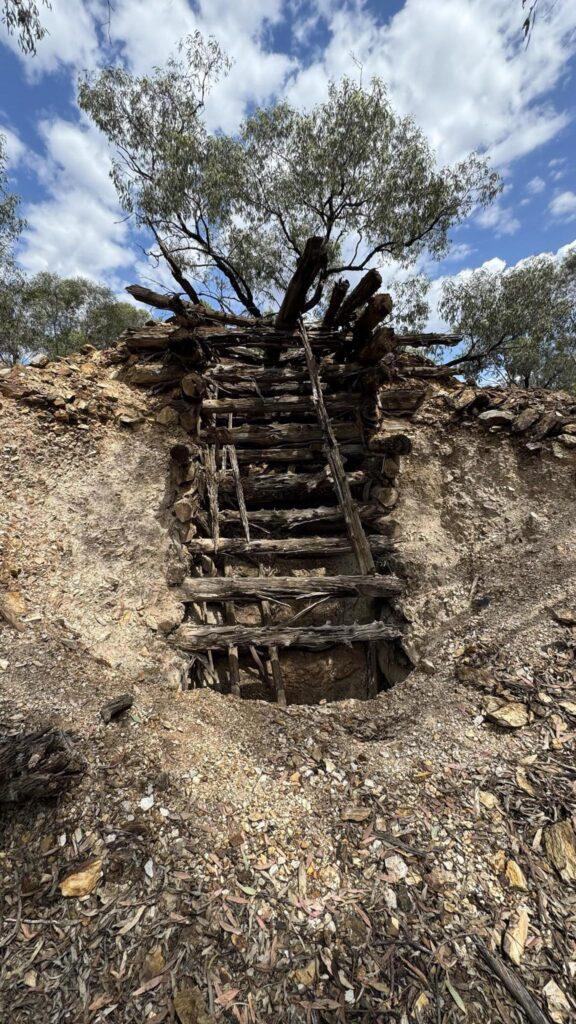Touch the Sky: Apprentice joins nickel master in bid to become ASX tin barons
One is a legend of the game, the other a rising star. Together Sky’s Norm Seckold and Ollie Davies want to reshape the ASX tin market.

Stockhead
Don't miss out on the headlines from Stockhead. Followed categories will be added to My News.
Nickel Industries founder Norm Seckold is looking to repeat his Indonesian nickel success in Australian tin with Sky Metals
Young MD Ollie Davies thinks ore sorting will be a game changer for its revival of the Tallebung tin field in New South Wales
Limited ASX tin opportunities with Australian projects outside Renison owner Metals X
Rooty Hill boy Norm Seckold was barely out of an economics degree at Sydney University when he was inducted into the ways of Australian mining with a seat on the sidelines of the Poseidon nickel boom as a trainee analyst.
It led to a five-decade career as a resources entrepreneur across a biblically long catalogue of listed companies, most successfully in the past decade as the chair of ASX-listed market disruptor Nickel Industries (ASX:NIC).
The company seemed dead to rights when, after just four shipments from its Hengjaya nickel laterite mine on the Indonesian island of Sulawesi, the nationalist government of Joko Widodo banned shipments of unprocessed nickel ore.
But a strategic partnership with stainless steel giant Tsingshan placed NIC, led by a young mining executive with an affinity for the Southeast Asian nation called Justin Werner, on the fast track to a $4bn valuation and a nickel book larger than BHP, Glencore and Eramet.
“There was a lot of scepticism,” he said. “Chinese partner, Indonesia, nickel laterites.
“We figured we knew our partner well, and we have a wonderful partner there. We knew that they had the technology to take these projects and they already had successful operations.”
Seckold’s now looking to repeat that feat as the chairman of Sky Metals (ASX:SKY), where a technical innovation could crack open a window to the undersupplied tin market via its Tallebung project near Condobolin in New South Wales’ hot Lachlan Fold Belt.
The potential codebreaker for Sky, which previously focused on the higher-grade but metallurgically complex Dorodilla project, has been the suitability of its ore to upgrading via industry standard Tomra ore sorters.
“I see this a bit the same way (as NIC) after the breakthrough with the treatment process, the cassiterite (tin oxide) mineralisation at Tallebung has a feel that it was just handmade for the Tomra ore sorting process," Seckold said.
“We've seen a five, six times uplift in grade, so you'd have to treat only a sixth of the rock and that makes a huge difference to the project economics.”

Tin soldiers
Tin was discovered at Tallebung in the 1890s when its shallow high grade cassiterite ore was visibly abundant at surface in outcrops, some of which remain today.
Now a virtual wasteland dotted with wood-lined shafts and the vestiges of process plants from days gone by, the project was worked over as recently as the 1970s by a single company which combined the alluvial tin field into a single operation.
Rusted debris is all that remains of a town which stood recently enough for neighbouring farmers to have attended school on the edge of a large pit.
While Sky initially chased higher grade targets that resembled the tin mines known to have operated in the region, the resource found beneath that pit was altogether different in nature.
In January this year, the most recent estimate tallied up to 15.6Mt at 0.15% Sn for 23,200t of tin metal at a 0.08% Sn cut off.
A conceptual exploration target of 23-32Mt at 0.14-0.17% Sn from drilling to date suggests that will be upgraded further. Mineralisation has so far been found over 1.7km of strike and at a width of 400m.
The resource extends to around 250m below surface, around a third of it oxidised, a feature that tends to make material easier to dig up and process. Cassiterite has been found as far as 600m deep.
What convinces recently appointed managing director Ollie Davies Tallebung can become Australia’s next tin mine is the fact that 0.15% grade has been upgraded to 0.7% in test work conducted hand in hand with Tomra at its Castle Hill ore sorting facility.
It doesn’t sound like much, but with tin prices at historically strong levels of US$32,645/t on Friday, that equates to around 2% copper, according to Sky.
“Dorodilla actually has a much better grade, but (we shifted focus to Tallebung) because of all of the advantages that we have at Tallebung with it having a history of mining, as well as the shallow mineralisation, which is shallow dipping, so we'll get a low strip ratio,” Davies said.
“And then that comes into figuring out ore sorting, and its implications in tin, where ore sorting is a very standard technology.
“It's really one of the best deposits in the world for ore sorting, and that's quite a unique characteristic.”

Young blood
Davies spent his 20s on mines in New South Wales, leading drill programs for large gold miners Alkane Resources (ASX:ALK) and Evolution Mining (ASX:EVN).
He came to Sky initially as its chief geologist and then chief executive, crowned managing director at the age of just 32.
Seckold, who himself started his first listed company around the same age in the early 1980s, describes Davies as a very determined and skilled young man, taking the lead on the ore sorting strategy.
In some ways Seckold is a perfect mentor.
Alongside non-executive directors Remus Karaitis and Richard Hill, who originally vended the project almost 20 years back into a company which eventually became Aurelia Metals (ASX:AMI) (still Sky’s largest shareholder at 3.2%), the fact Seckold became a company chief at such a young age sets a template for the Blue Mountains boy.
While its a fraction of the size, Davies is grasping an opportunity to follow the master and apprentice pattern Seckold set with NIC's Werner.
"All of our board members were in similar positions at a similar age," Davies remarked.
"They know what people at this age are capable of but also how to support."

X-factor
Exposure to tin is, for Australian investors, largely about taking a position in Metals X (ASX:MLX), the owner of 50% of the historic Renison Bell mine in Tasmania alongside Chinese refiner Yunnan Tin.
On its own the ~10,000tpa operation covers around 3.5% of primary tin demand.
Unlike Tallebung, Renison is regarded as world class because of its grade – 1.57% Sn excluding tailings.
But Davies points out grade is not always king.
“Quite a good analogy that may or may not help is looking at rare earths,” he said.
“People can understand, if you have an ionic clay hosted deposit, you can do very, very low grades and make a very high margin on those if you have a very simple processing method and they're open-pittable.
“At Renison, you're talking about something akin to a typical hard rock rare earth deposit where they need very, very high grades to carry all their margins.”
Renison stretches to a depth of 1.4km, where heat and metallurgical quirks add to the challenges its operators meet with grade.
Sky’s aim, with drilling planned to expand the Tallebung resource and identify higher grade pockets uncovered in recent hits, is to add mine life for a future scoping study while targeting a similar annual production profile to MLX’s share of Renison.
Metals X currently trades at $385m, Sky at just $35m. It’s a gap the company will need to close with exploration and study success to attract the institutional dollar. If it can find support from the market, Davies thinks the company can be a relevant player in the global tin market.

And what of that tin market?
It may not grab the headlines like copper and lithium, but tin has emerged as a major beneficiary of the dominant investing themes of the 21st century – energy transition, electric vehicles, AI and tech.
Since lead solder was banned in 2003, tin has been the dominant material used as the glue for electronic circuitry, making up over half the metal’s end market.
But production has been faltering.
A coup in Myanmar has seen the dominant refiner China lose access to 40% of its imports, while alluvial fields in Indonesia are becoming less productive.
Legacy fields where pegmatite mineralisation is common have become tantalum and lithium producers, with only one substantial new hard rock operation – London-listed Alphamin’s Bisie in the DRC – opened in recent years.
While other battery metals have been smashed into submission in 2024, tin prices are around 25% higher currently than their average 2023 price of US$25,938/t, and sit marginally above the record average of US$32,384/t in 2021.
To capture the magnitude of the change in fortunes, prices never averaged more than US$21,899/t between 2014 and 2020, reaching a nadir of US$16,067/t in 2015.
“It's hard to see where any new tin is coming from. So with my very basic economics knowledge, if demand exceeds supply, price tends to go up,” Seckold quipped.
Davies said China was now ‘very hungry for tin concentrate, and so is the rest of the world’.
Given Sky is at an early stage, it could also be an attractive source of supply for US-aligned countries beholden to the Chinese supply chain like Korea and major semiconductor producer Taiwan according to Davies.
“At the moment, we're only seeing supplies dropping off,” he said.
“That supply side is very, very fragile, but the demand side is increasingly picking up with AI technologies and other things increasing that demand for tin.”
Sky Metals shares surged higher on Friday, rising 17.65% to 6c.
The reporter travelled to Tallebung as a guest of Sky Metals.
Originally published as Touch the Sky: Apprentice joins nickel master in bid to become ASX tin barons


